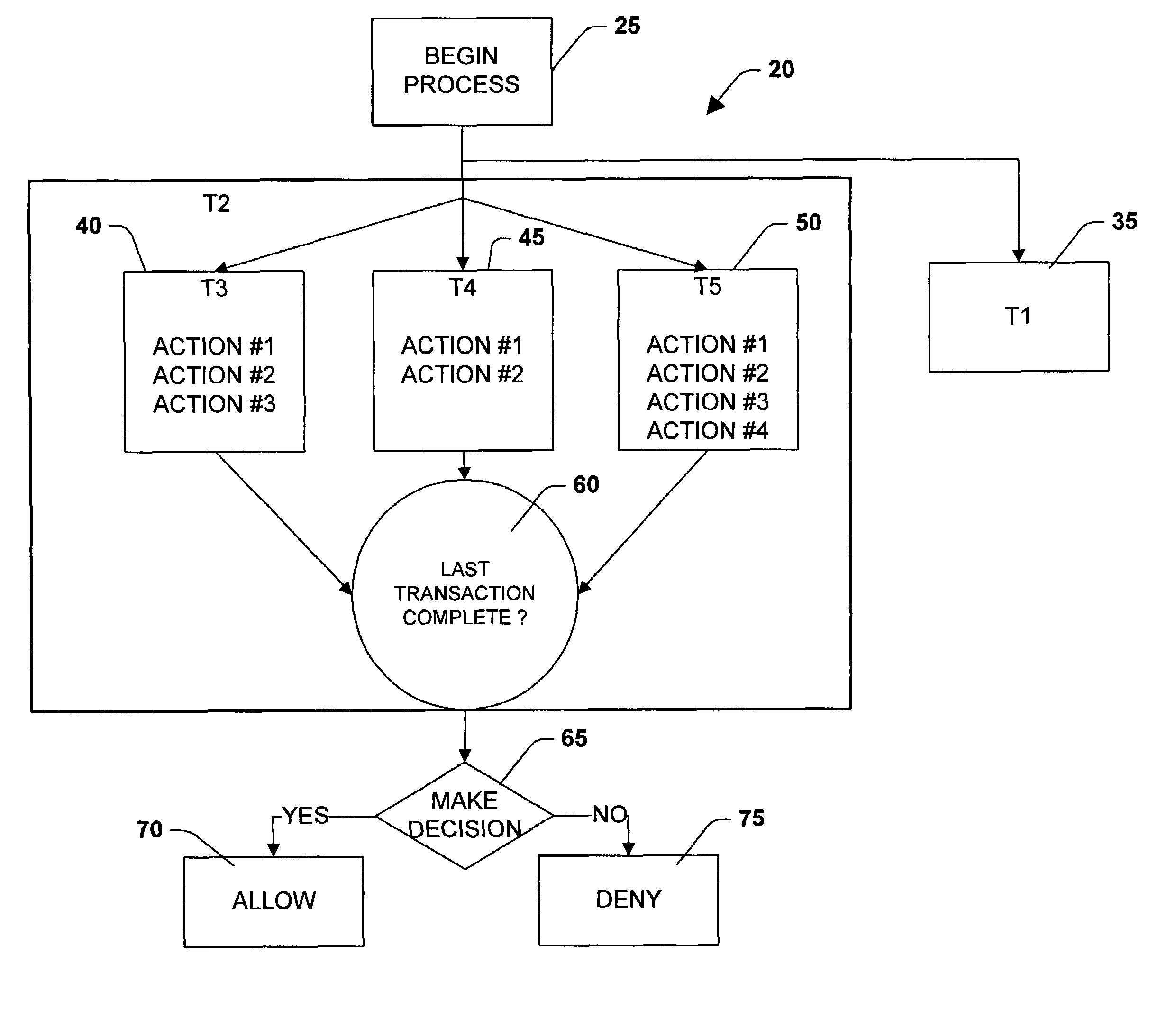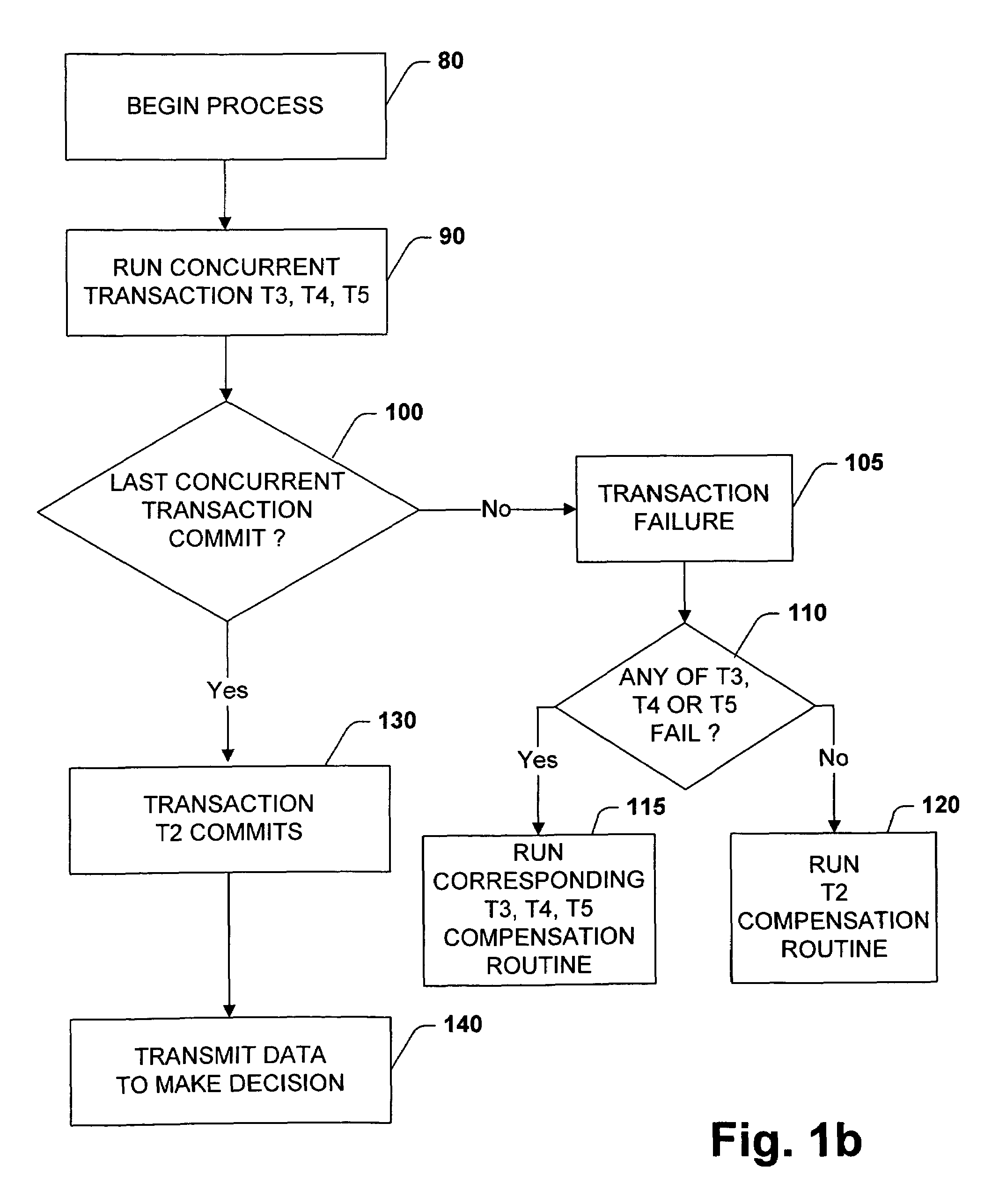Model for business workflow processes
a business workflow and process technology, applied in the field of computer processes, can solve the problems of inability to perform user monitoring of transactions, inability to invoke application specific programs, and inability to achieve significant efficiency improvements
- Summary
- Abstract
- Description
- Claims
- Application Information
AI Technical Summary
Benefits of technology
Problems solved by technology
Method used
Image
Examples
Embodiment Construction
[0089]The present invention is now described with reference to the drawings, wherein like reference numerals are used to refer to like elements throughout. The present invention is described with reference to a system and method for modeling a business workflow process. The system and method employs process algebra techniques to arrive at the model. The model is reduced to an application programming language that can be utilized in a schedule file for a variety of business workflow technologies. The programming language allows users to implement various features of the model during implementation of the user's particular application to create custom business workflow models. The schedule can then be bound to application program interfaces, such as the common object model (COM) interfaces, through a separate binding file, such that the same business workflow model can be implemented for a variety of business workflow technologies.
[0090]FIG. 1a illustrates a flow diagram of a business...
PUM
 Login to View More
Login to View More Abstract
Description
Claims
Application Information
 Login to View More
Login to View More - R&D
- Intellectual Property
- Life Sciences
- Materials
- Tech Scout
- Unparalleled Data Quality
- Higher Quality Content
- 60% Fewer Hallucinations
Browse by: Latest US Patents, China's latest patents, Technical Efficacy Thesaurus, Application Domain, Technology Topic, Popular Technical Reports.
© 2025 PatSnap. All rights reserved.Legal|Privacy policy|Modern Slavery Act Transparency Statement|Sitemap|About US| Contact US: help@patsnap.com



